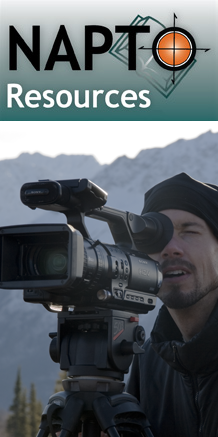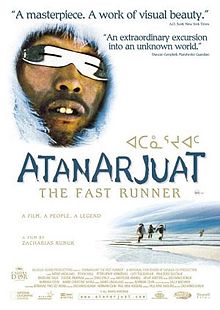The Arts: Traditional and Contemporary
It has come up repeatedly in our discussions that we need to stop thinking about the First Nations culture just as a static artefact from the past and need to look at their existing culture as well. So to remediate this I ventured on the Web to look for sources that would introduce me to the present day culture of the First Nations people. I examined sites that were reaching to the aboriginal people through the arts. I looked for traditional art and dance; contemporary and traditional music, movies. I was also looking for the presence of the aboriginal youth on the web: a sign of self-identity and pride. This follows from my research focus of reaching out to the aboriginal child and helping them succeed.
I’ll divide my finds in different categories.
Art
http://resources.curriculum.org/tcf/teachers/projects/repository/AboriginalArt.pdf
This document is an excellent repository about aboriginal art, myths, and their environment. While created as a teaching tool, the links are very diverse and provide in-depth knowledge about the aboriginal life style.
http://www.artistsincanada.com/php/~aboriginal.php
This is an excellent resource to find contemporary artists practicing a variety of arts. The site provides links art galleries or the artist’s website where you can see the work of these artists and also read their biographies.
Music
http://www.collectionscanada.gc.ca/aboriginal-music-song/028012-2100-e.html
This Canadian government site provides audio of many traditional songs of the aboriginal people. This is a very educational site which explains the musical instruments used and the significance of music and singing within the culture.
http://www.angelfire.com/wy/nativepride/tribal.html
This is a similar site which has songs from various aboriginal groups from the USA and Canada.
http://www.canab.com/mainpages/events/musicawards_files/2011/winners/#bestalbumoftheyear
The Canadian Aboriginal Music Award site showcases contemporary artists. It was fascinating to see the different categories of awards for aboriginal singers and to realize how diverse their contemporary music is
Dance
I was totally unaware of there were many aboriginal performance art groups that traveled around the world to show case their culture.
http://www.ksan.org/html/arts.htm
Movies
The Aboriginal groups have also joined the movie making industry and are using it brilliantly to showcase their pride and their struggle
http://www.isuma.tv/atanarjuat
Atanarjuat is Canada’s first feature-length fiction film written, produced, directed, and acted by Inuit. It is an exciting action thriller set in ancient Igloolik, the film unfolds as a life-threatening struggle between powerful natural and supernatural characters.
http://www.firstnationsfilms.com/
First Nations Films distributes and creates award-winning educational Aboriginal documentary films and videos for, by and about First Nations people. They create exclusive native programs that are shared with schools, universities, libraries, organizations and other groups and institutions.
Nureen also provided a link for Native American Public Telecommunications in her post

Getting Involved
We have discussed how the Web can be used by the aboriginal people to reach out and share ideas. I found some examples of the younger generation showing pride in their cultural believes.
What Counts:
https://www.youtube.com/watch?v=keczbYdbvpE
I Can Tell You a Legend: The Mink Story – Gwa’sala-‘Nakwaxda’xw Digital Storytelling
https://www.youtube.com/watch?v=iBcTQF5qYFQ
November 26, 2011 No Comments
Educating the Aboriginal Child
I have been surfing the net to find resources that will help me with my focus of educating the First Nations child in a regular school. I need to find resources that will teach me ways to reach out to my First Nation students and tell me why these methods would be effective. There are lots of sites and documents but after our journey through this course I am very cautious about what I choose. From the plethora of information I have to find meaningful, authentic sources. After our readings about non aboriginal researchers and their tainted work, the wannabee Indians and their half-baked philosophies, and the passionate Indian radicals without sound traditional reasoning, I have to sift and sort to find some gold nuggets.
There is much work out there done by First Nation researchers or work by non-aboriginals that has the support and approval of the First Nations people. I have found articles about the history of First Nations education, the First Nations Pedagogical beliefs, challenges faced by First Nation students in schools on and off reserves, and learning styles that are conducive to educating a First Nations child. There are documents from various education ministries from all over Canada in which they propose and approve of ways in which First Nation beliefs can be incorporated into to regular teaching content to make the learning more applicable, and in my opinion more complete. Here are some of them:
1. Learning Styles of American Indian/Alaska Native Students: A Review of the Literature and Implications for Practice
By Cornel Pewewardy
2. Aboriginal Education in Canada: A Retrospective and a Prospective
By Verna J. Kirkness
3. Joining the Circle: A Practitioner’s Guide to Responsive Education for Native Students By Agnes Grant and LaVina Gillespie
4. Culturally Relevant Pedagogy: First Nations Education in Canada
By Faith Maina
5. Teaching in a First Nations School: An Information Handbook for Teachers New to First Nations Schools
2006 by First Nation Summit of British Columbia
6. Some Ministry Documents:
INTEGRATING ABORIGINAL PERSPECTIVES INTO CURRICULA: A Resource for Curriculum Developers, Teachers, and Administrators 2003 Manitoba Education
Ontario First Nation, Métis, and Inuit Education Policy Framework (2007) @
Shared Learning British Columbia
November 5, 2011 No Comments
Traditional and Contemporary Literature
Since the focus of my study is to examine how technology can bring cultural experience to students, in this module I focused on stories – both traditional and contemporary. Since the traditional stories are oral, I looked for websites with animated stories. As most contemporary stories will be written, I have tried to find sites that will help locate aboriginal literature.
1. Dust echoes
This site is a visual treat which provide visitors a very rich interactive experience of learning from the Aboriginal Dream Stories from Australia. The stories are illustrated using traditional native art with traditional music in the background. The site explains the origin of the stories and show where they originated on the Australian map. It provides study guides, quizzes. These quizzes do not have a simple yes or no answers but an explanation to support deeper reasoning.
The most interesting aspect on the site is an opportunity to create a mash up with the existing video. It also provides classroom resources for teachers. These resources are very detailed, not just about the activities, but with contextual information about the music and story. The site ensures that the teachers have in-depth understanding of what they will teach.
http://www.abc.net.au/dustechoes/
2. Stories of the Dreaming
This page is on the Australian Museum site. It explains the significance of such stories in the life of the Indigenous Australians. It explains how the Dream Stories do not belong to one individual but to a group or nation of people as these stories have been handed down through the generations. It explains that the elders are the ‘custodian’ of the stories of that people and that permission to re-tell the ‘Stories of the Dreaming’ can only be given by the custodian/s of each story, in consultation with their community. In the movie gallery there are movies of stories categorized according to the area of origin. The most meaningful aspect is that each story is accompanied by an explanation made by an elder from that nation. This makes the stories more meaningful and relevant to the viewers. There is also a written transcript about the story.
http://australianmuseum.net.au/Stories-of-the-Dreaming
3. Bunyip
This site uses the aboriginal myth of Bunyip to create an environment for the students to explore aboriginal stories and math, science, technology from the aboriginal perspective. In true fashion of oral tradition, Bunyip has continued to be a part of the Aboriginal and mainstream culture in the present day. The site beautifully shows this presence of Bunyip in the present and traditional culture. The reading level is not very high which makes the site more accessible to children of all age groups.
http://www.nla.gov.au/exhibitions/bunyips/flash-site/index-flash.html
4. First Nations Canadian Literature
This site showcases a lot of traditional and contemporary literature from the Canadian First Nations. The books are classified according to origin- Metis. Inuit, Pacific Northwest, but there is also a general section and sections for novels and graphic novel. When you click on the book, the site provides a brief synopsis of the book and the date of publication. The books range from picture books to chapter books for young adults.
http://www.kidsbooks.ca/department.aspx?DeptID=3700&
5. Canadian Literature: A quarterly of Criticism and Review
This site provides a dynamic list of Canadian publishers who publish both mainstream and Aboriginal Literature. It links to 15 publishers that publish in First Nations category. These links lead you to the publishers’ site where lots of work of Aboriginal authors is showcased. There are publishers like Totem Pole Books, Kegedonce Press, Oolichan, Pemmican Publication Inc. who exclusively print only FN material. Some also provide space for readers to interact through blogs.
http://canlit.ca/publishers.php?category=First_Nations
October 12, 2011 No Comments
Resources for reaching out to the Aboriginal Children
http://www.aboriginalcanada.gc.ca/acp/site.nsf/eng/index.html
A collaborative site by the Canadian Government and many FN associations, this site provides information on the FN history, culture, and traditions. Besides information it provides the FN elders, women, youth, and children many activities and resources. I particularly found the links for younger children appealing where the web is used efficiently to teach the children their history, language, and the traditional way of living. Many concepts are presented in game format.
http://www.collectionscanada.gc.ca/stories/index-e.html
This site is “an exhibition celebrating stories from the oral tradition of the Inuit, Métis and First Nations peoples, from the past to the present.” It is a documentation of their oral traditional that bear witness to the cultural diversity, living history and collective knowledge from which they came.
http://www.education.gov.sk.ca/aboriginal-resource-list
This site has an exhaustive list of aboriginal resources to link with all aspects of the curriculum. Very useful guide for educators
http://www.civilization.ca/cmc/exhibitions/tresors/ethno/ety0000e.shtml
This Gateway to Aboriginal Heritage has interesting activities for children and teachers. It has rich Canadian content about traditional people and their life style. It also has lesson ideas that help students learn about aboriginal history and culture.
Indigenous Knowledge and Pedagogy
This is a very detailed paper that aims to describe and evaluate work done on indigenous knowledge and pedagogy in the First Nations education. It also explains the ethics and criteria for understanding and integrating indigenous knowledge in the classroom.
September 24, 2011 No Comments
Enriching Young Lives
Last year, for the first time in my entire teaching career, I saw pride and confidence in my two aboriginal students. It was refreshing to hear them sing their cultural song in front of the entire school in their regalia to kick of the Harmony Week, to have them bring artifacts from grandma to share during our First Nations studies, to see them ecstatic about going to a powwow, and to see their impatience while grandma made their drums. But their cultural abundance also made me realize that this was a rare occurrence. Most of the other aboriginal students at my school do not exhibit such pride, excitement, or even curiosity. They view their cultural activities with their First Nation Advocate as fun and a way to be out of the class. I discussed this with the First Nations Advocate and we both want to look at ways to enrich the cultural experience of aboriginal students at elementary school level and instill pride in them about their culture. For my assignment I will examine authentic and meaningful technological resources and tools available for the aboriginal children and look at ways to incorporated them into my school culture and the prescribed curriculum.
September 24, 2011 1 Comment






